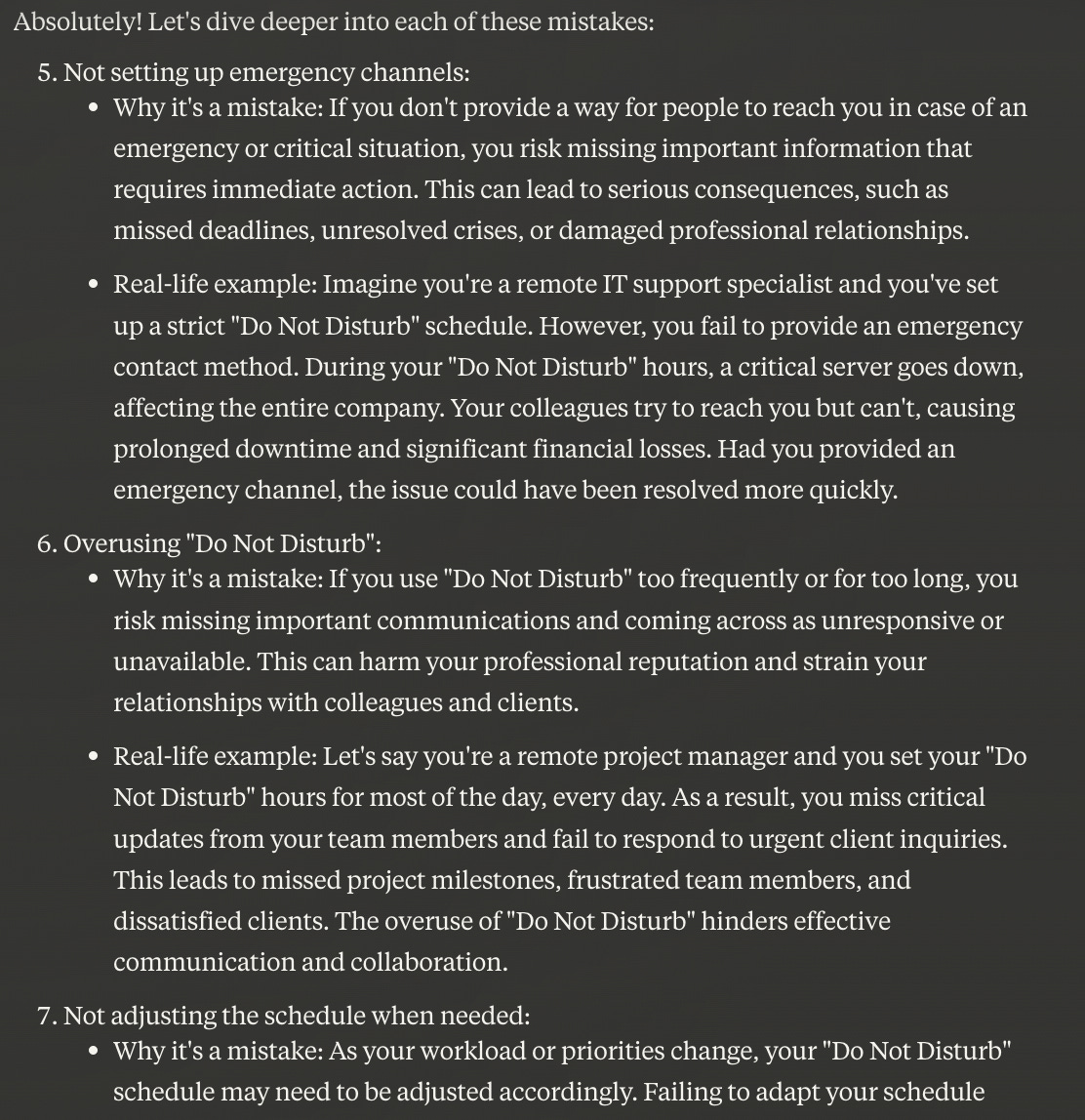Prompting Vs. Chatting With AI
Hey there, Digital Writers!
Today, I want to share with you the two main ways I think about interacting with AI:
Prompting and Chatting
Prompting is your go-to when you have a clear idea of what you want. Chatting is perfect for exploring new topics and uncovering unique angles.
By switching between prompts and chat, you can:
Get focused results when you have a clear goal
Come up with fresh ideas for topics you're less familiar with
Effortlessly transition from brainstorming to execution
First, let’s talk about prompting.
1. Prompting
Prompting is when you have a crystal clear idea of what you want AI to generate. You provide specific instructions. And you have a specific expectation about the desired output.
For example, let's say you want to write a blog post outlining 5 tips for better sleep. You know the problem you are solving, the main points, and all the sub-points. So you prompt the AI with those details and let it write your first draft.
99% of what you get as a subscriber to Write With AI are “prompts.”
We come up with the idea. Then we design and test each prompt so you can get a similar result, like writing a "How To" Guide, or a Biggest Mistakes post, or even a LinkedIn Story.
Prompting works best when you:
Know exactly what you need from AI
Have clear guidelines and constraints
Want AI to expand or fill in the gaps for your ideas
This saves time and keeps you in control of what AI creates.
Now, let’s look at Chatting.
2. Chatting
In contrast, Chatting with AI is more freeform and exploratory. Rather than having a fixed objective, you engage in back-and-forth dialogue to uncover new ideas and insights.
Chatting serves two main functions:
Priming: This is when you guide AI's thinking before making a request. By asking broad questions, you can gauge its knowledge on a topic and steer it towards the angles you're interested in. Priming helps ensure AI's outputs are relevant and useful.
Discovery: Sometimes you simply don't know much about a subject and want to learn more. Chatting lets you go down the rabbit hole, asking questions and following threads that pique your interest. You can always have AI summarize the key takeaways at the end.
For example, when I wrote the post, “How To Write Lead Generating Content Using HBR’s Elements Of Value Pyramid” I wasn’t super familiar with the framework, so I started by asking AI to explain the basics. Then based on its response, I incorporated what I learned into different ways to generate ideas using the framework. The chat log became a mine of content ideas and angles that I could draw from.
Chatting is ideal when you:
Are exploring a new topic
Want to uncover unique angles
Need to build context before writing
The beauty is, chats can directly feed into prompts.
After a chat session, you can prompt AI to organize and flesh out the most promising concepts and use proven prompt like a Tips or Beliefs post.
It's a powerful one-two combo.
Chatting Example
Since you are already familiar with Prompting as a Write With AI reader, let’s take a look at a simple Chatting Example.
Here's a simple 3-step process:
Start with a broad question: "What do you know about [topic]?" This gives you a high-level overview and helps identify gaps in your own knowledge.
Follow up with more specific questions based on the AI's response. For example: "Can you explain [concept from previous answer] in more detail?" or "What are some examples of [idea mentioned]?"
Summarize What You’ve Learned Or Apply A Prompt. Once you feel you have enough context, ask the AI to summarize the key points or provide a list of potential subtopics to explore further. Or, use one of your prompts to write a post for you.
Let's say you want to write an article about remote work productivity hacks. Your chat might look something like this:
You: What do you know about staying productive while working remotely?
AI:
You: What are some specific techniques remote workers can use to minimize distractions?
AI:
You: What are some mistakes remote workers make when they implement a “Do Not Disturb” schedule?
AI:
You: Great, I’m interested in items 5, 6, and 7. Can you expand on each of these mistakes? Explain why they are mistake and give a real-life example of what happens you make each mistake.
AI:
You: Great. Now, for the mistake: "Not setting up emergency channels." Please write a new 750 word post using the INPUT and TEMPLATE I've provided for my target audience of remote workers who are challenged staying productive while at home and are trying to use a Do Not Disturb schedule. (Note: You can find the “Tips Prompt” here.)
AI:
From there, you can take the AI's summary and either prompt it to expand on each point or use it as a jumping off point for your own writing.
The more you chat, the more you'll discover.
The secret (and the fun) is drilling into different ideas that the AI give you into more and more detail. Specificity is the secret!
Summary
To recap, prompting is for targeted requests while chatting enables open-ended exploration. Both are valuable tools for AI writing.
The key is knowing when to use each approach:
Have a clear idea and outline? Prompt away.
Venturing into unknown territory? Start with a chat.
Need to generate ideas? Chat first, then prompt.
Experiment and find what works best for your workflow. With a little practice, you'll become an AI-assisted writing machine.
Chat soon,
Co-Creators of Ship 30 for 30.









Divergent (chat) vs Convergent (prompt) thinking!
PS: Somehow, Claude seems better at "chat" and ChatGPT at "prompt"... anyone saw this pattern? Or is just me?